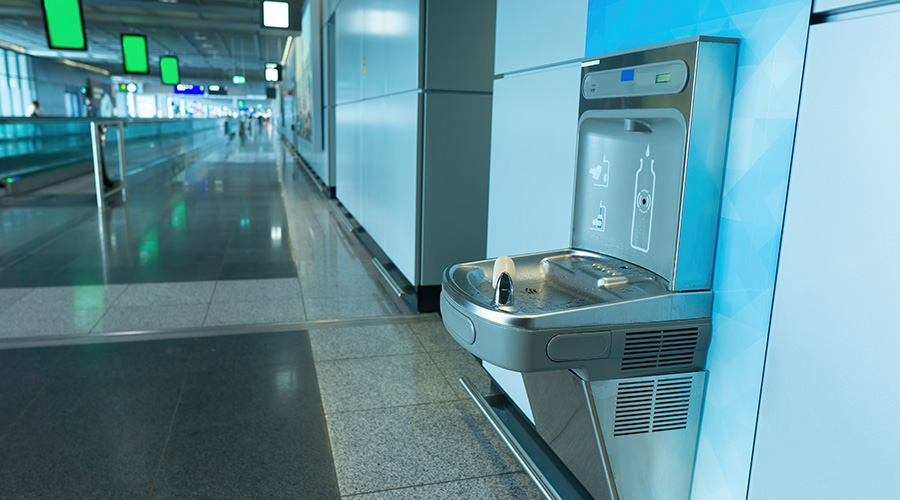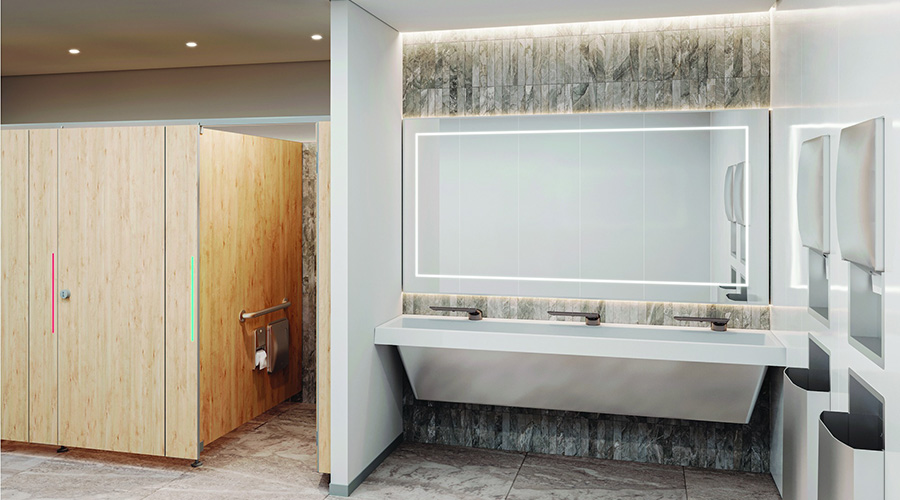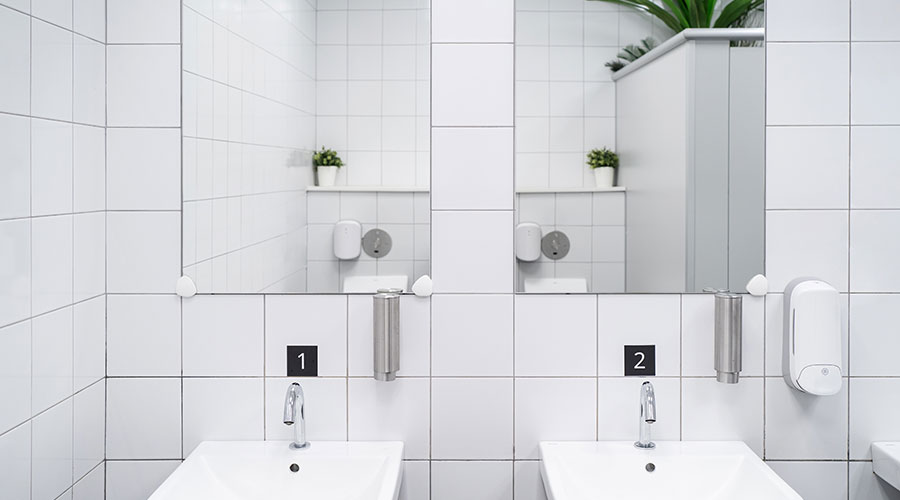Check Green-Building Plumbing Codes When Installing Restroom Faucets
Managers seeking water savings also can elect to equip lavatory faucets with low-flow aerators. Current green-building plumbing codes require most public-restroom faucets to have a flow rate of no more than 0.5 gallons per minute (gpm). Older faucets might have flow rates of 2.2 gpm or even higher, so significant water savings can result from simply installing new faucet-flow-control devices, such as aerators, with a 0.5 gpm flow rate.
Replacement flow-control devices are available in two types: aerated stream or laminar. Aerators add air to the water and tend to make the flow feel lighter. Laminar flow devices produce a stream comprised only of water. The flow of water feels heavier, and users might perceive a higher flow rate. Laminar controls also tend to deliver a constant flow rate, regardless of any change in pressure of the incoming water line.
If faucets are due for replacement, managers should select faucets with a flow rate of 0.5 gpm. When faucet replacement is not possible, they should replace the pre-installed flow-control device — typically, 1.5-2.2 gpm for retail faucets — with the correct replacement device with a flow rate of 0.5 gpm.
Managers also should consider either faucets with electronic sensors that automatically turn faucets on and off when they sense hands, or mechanical metering devices that dispense a pre-set amount of water. These devices can prevent water waste by preventing a faucet from remaining on even though the restroom is unoccupied.
Electronic-sensor faucet models can be hardwired or powered by a battery pack, which might require periodic replacement. They also can rely on a built-in solar panel that receives a charge from restroom lights or on an internal hydroelectric turbine that recharges the battery during use.
Managers would be smart to keep these suggestions in mind when considering restroom renovations. By wisely selecting controls, fixtures and materials, managers can save water and energy and reduce cleaning times. They also must be sure to check for rebates and incentives from local utilities when replacing plumbing and lighting fixtures with more water- and energy-efficient models.
Conrad Kelso, P.E., CEM, LEED AP O+M, is a project engineer with Facility Engineering Associates.
Related Topics:















